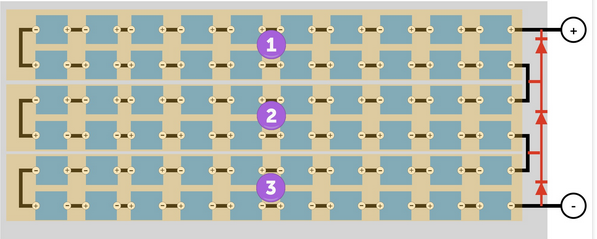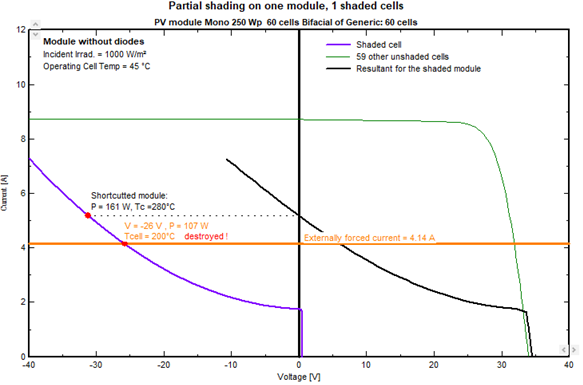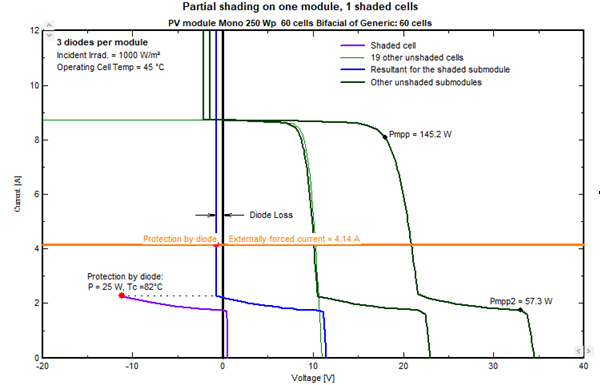|
<< Click to Display Table of Contents >> Hot-spot and Submodules |
  
|
|
<< Click to Display Table of Contents >> Hot-spot and Submodules |
  
|
In a crystalline PV module the cells are mechanically disposed as rows (in most of modern modules: 6 rows of 10 or 12 cells):

All the cells are connected in series. Therefore electrically we have 60 (or 72) cells in series, in one "string".
In this PV module we name "sub-module" the series of cells protected by a by-pass diode. In this particular modules we have 3 sub-modules of 20 cells each, disposed in length (mechanically 2 x 10 cells).
The main role of the by-pass diodes is to protect the cells against the "Hot-spot" problems. See below.
In a shaded sub-module, the current is limited to the current of the less illuminated cell. Therefore the I/V curve of the sub-module is quasi-identical, whatever the number of cells shaded. Only the reverse-biased I/V behaviour will slightly change. This is the reason why the sub-module is the basic unit for electrical shadings calculation.
NB: In the "Twin half-cut cells" technology, we consider that we have 6 sub-modules, each of 60 (72) half-cells in series. The by-pass diodes are shared between 2 sub-modules.
When operating at sun, when one cell is shaded, its current is limited, and the current of other cells may induce a dangerous reverse current through it.
The shaded cell will absorb the reverse current (under a high voltage) and will heat-up. This is what is named the "Hot-spot" problem.

When the current imposed by the rest of the array exceeds too much the short-circuit current Isc of the shaded cell, this current should be derived in order to limit the current in the shaded cell.

This is the role of the By-pass diodes, which are connected between each group of cells. When the voltage becomes negative, the by-pass diodes become active and prevent it to be too negative, so that the voltage across the shaded cell stays limited to a safe value.
So the main objective of the by-pass diodes is to protect the module against dangerous hot spot problems.
In practice, we should have at least one diode for about 20 - 24 cells in series (i.e. 3 diodes in 60 or 72 cells modules). A module of 96 cells should be equipped with 4 by-pass diodes.